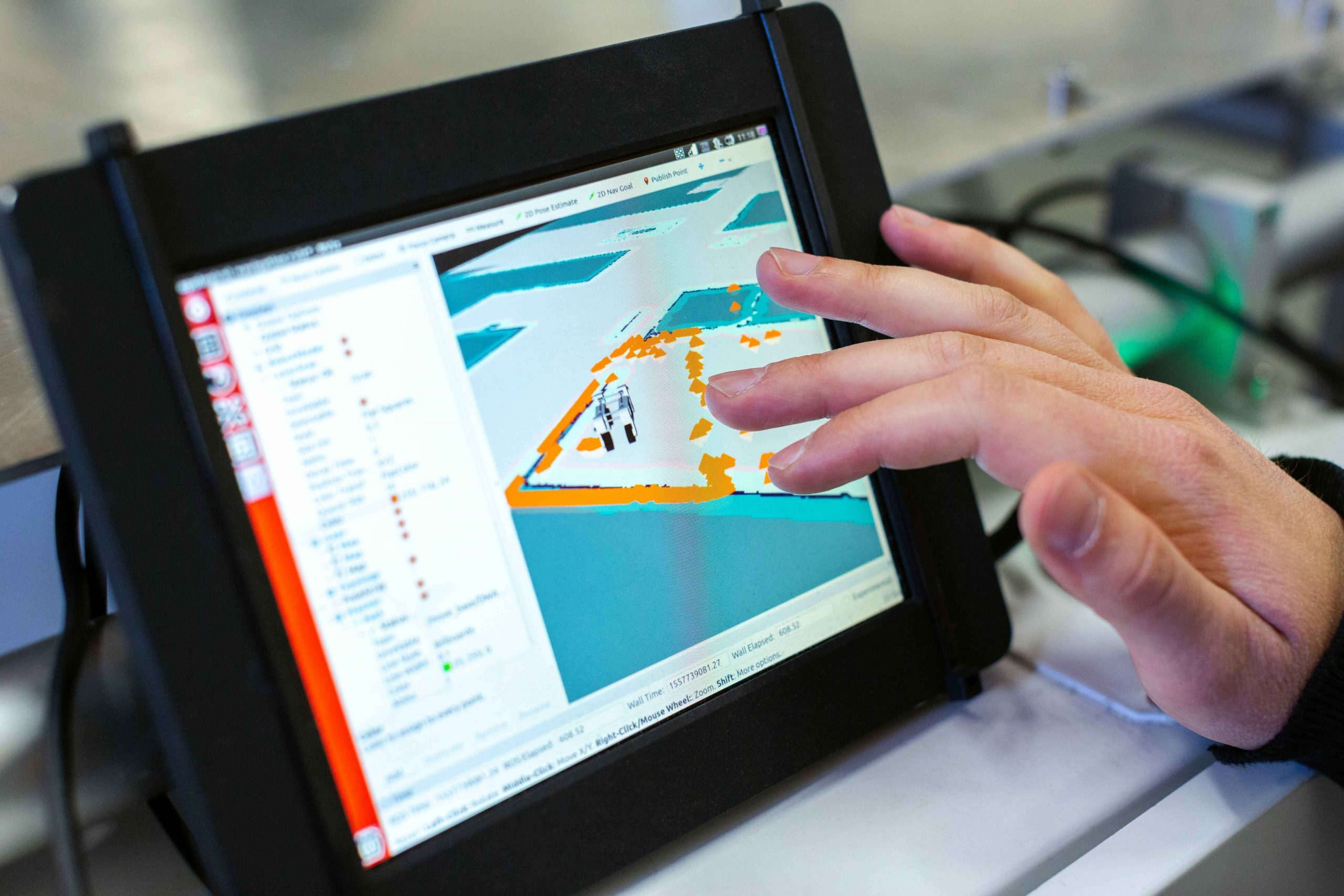The Ultimate Guide to Choosing the Best Geological Software
21 January 2025
7 Mins Read

toc impalement
Geology is a field in this digital age with advanced operations due to rapidly increasing technology! A geological software is significant to enhancement of operations, improvement of overall efficiency in data collection and optimization of resource management.
It is important to keep these factors in mind when looking for the best Geological software. Apart from learning about the changing environment, geotechnical engineering and mineral exploration, the software actually contributes to a lot of other aspects. Constructing realistic models of subsurface properties and structures are other such processes performed by Geological software.
So, it is a complicated task to research, identify and choose the best Geological software. It is important to have the correct and best Geological software which will help you streamline the processes. Furthermore, the Geological software also helps you in making data-driven settlements.
Understanding Geological Software
In this article, we will guide you through the benefits, key features, operations and considerations of the best Geological software. It will help you understand the conceptualization of Geological software along with selecting it based on your needs.
So, what is Geological software? To understand the tool, we need to know its function! A Geological software is a specialized resource which engineers and geologists use to analyse, model and interpret geological data.
How are these data then used? Users analyse these data to create 3D models which are accurate of geological formations thus, visualizing subsurface structures. Furthermore, engineers and geologists perform simulations that are complicated to assess potential risks along with the feasibility.
So, why do we need the best geological software? We can resolve issues related to efficiency and accuracy especially when dealing with data integration of geological information.
Essential Features of Geological Software
When evaluating geological software, robust geological modeling capabilities are among the most critical aspects. The ability to integrate drillhole data, generate 3D geological models, and analyze stratigraphy enables better resource management.
When it comes to decision making, we need advanced data visualization tools along with analytical features. This will provide significant insights related to the data integration thus, contributing to the overall decision-making processes.
Simultaneously, important features that must be present in the geological software to become the best are remote sensing, geophysical data and existing GIS. you will be able to use these insights to create a comprehensive approach that will make the geological research and studies much easier!
What do you need to keep in mind when choosing the best geological software? A user-friendly interface is the first thing along with customizable dashboards, reporting tools that are advanced and an intuitive navigation. These features will make you more adaptable to the geological software ultimately making the whole process more effective!
Advantages of Implementing Geological Software
The use of geological software brings numerous benefits to exploration and resource management. It significantly improves data accuracy by automating complex calculations and reducing human errors.
It is important to minimize operational risks along with optimized resource planning because that is how you will save your increasing costs. Simultaneously, as geologists receive the real time data, they will learn about insights which will help them enhance their project plans along with making informed decisions.
Another added benefit is with the implementation of best geological software, geologists can be compliant with all the regulatory requirements. This means the software will contribute to the adhering of safety and environmental standards.
A key benefit, scalability is an outcome of using the best geological software because then it allows companies to consider the needs of their projects. Through this consideration, the companies can become more adaptable and expanded with regards to the overall needs of their projects.
With the best geological software, you can identify the potential geological hazards because it provides you with effective risk management. You can develop various mitigation strategies which are suitable in terms of collecting data, analysing them and integrating them.
Simultaneously, extraction planning and resource evaluation can be performed better with the integration of the best geological software thus, integrating an enhanced environmental sustainability.
Leading 2025 Geological Software Solutions!
There are diverse needs of engineers and geologists which can be met with the use of the best geological software. In the geological industry, you can get a variety of solutions related to these softwares. So in 2025, let me share with you some of the most popular and considered best geological software solutions!
- Petrel (Schlumberger) – It is one of the leading software which is known for their reservoir characterization along with subsurface modeling
- K-MINE – did you know that this software can actually provide you with robust data integration capabilities which is comprehensive of resource estimation solution along with geological modeling
- Leapfrog Geo – For geostatistical analysis, you can use this powerful modeling tool that is 3D and provides an advanced visualization data insight
- GeoStudio – This software is known for offering simulation capabilities that are quite advanced thus, specific for environmental and geotechnical analysis
- Surfer – Known for its strong data mapping and visualization features to support geological studies.
Choosing the Right Geological Software
You have to make several considerations especially when selecting the best geological software. These considerations include budget constraints along with proper evaluation of the total cost, accountability of ownership, implementation expenses, ongoing training along with licensing fees.
Yes, there can be major disruptions in the process especially when it comes to supporting and training resources to handle software. The providers are essential in order to facilitate further ongoing operational efficiency and a smooth transition in terms of transfer of responsibilities.
Keeping in mind future expansion, you need to accommodate the software and ensure operational proficiency. Scalability is another aspect of operational changes that is integrated. The best geological software should be known for its performance and reliability thus, providing valuable insights to accommodate future changes.
Additionally, the ability to customize the software to specific operational needs and its security measures to protect sensitive geological data are critical factors to consider.
Steps to Successful Software Implementation
Implementing geological software successfully requires a strategic approach. Your first step is to assess the needs of the project along with identification of the specific requirements which can be fulfilled by the software. The key stakeholders in this case are environmental scientists, engineers and geologists.
Furthermore, the stakeholders have the authority and the power to provide perspective along with ensuring the selecting and implementing of the process. They can implement various software vendors along with conducting pilot tests which will help them in determining the right one.
When evaluating the needs of the organization, you can consider these factors integrating the best geological software. To increase the potential of the software and use it to meet the needs of the organization, comprehensive training programs are needed.
These programs will make sure that the potential of the software is optimized to the hilt along with continuous gathering and monitoring of the feedback. To improve the software utilization across a certain time, the processes need to be more refined.
Challenges in Implementing Geological Software
Despite the numerous benefits, implementing geological software can present certain challenges. Integration complexity can pose difficulties when aligning new software with existing systems.
A common challenge that you might find when integrating a geological software is resistance to change! Apart from the resources, employees might not find adapting to the whole new technology completely acceptable. Furthermore, the input data should also be used if you want to reach an acceptable outcome.
Cost overruns are another challenge, with unexpected expenses potentially arising during implementation and training phases. Delays in technical support responses can impact operational efficiency, emphasizing the importance of choosing vendors with strong support capabilities.
Emerging Trends in Geological Software
When we talk about emerging trends, we need to address technology and how it plays an important role in shaping the future of geology. The first of many is artificial intelligence that is increasingly getting adapted to the overall software solutions initiative.
Simultaneously, you also need to consider machine learning which provides advanced data interpretation and predictive analytics. No wonder, there is a significant improvement when it comes to data accuracy.
The Internet of Things (IOT) technology is another aspect that helps with the management of real time data. The information that is collected from the field instruments are becoming more accurate finally bringing accuracy to the overall conceptualization resource conservation and impact assessment!
Conclusion
Finally, when choosing the best geological software, you have to make strategic decisions especially when it comes to resource management and exploration. It is significant when it comes to implementation of strategies along with benefits and features.
Furthermore, there are other features such as implementation strategies, which must be considered by geologists to make informed choices. This will help you align the goals of the business with specific needs and initiatives.
There are necessary tools which will help you develop insights creating a shift which will help the geological professional to make the right decision!
ADDITIONAL READING:


















Comments Are Closed For This Article